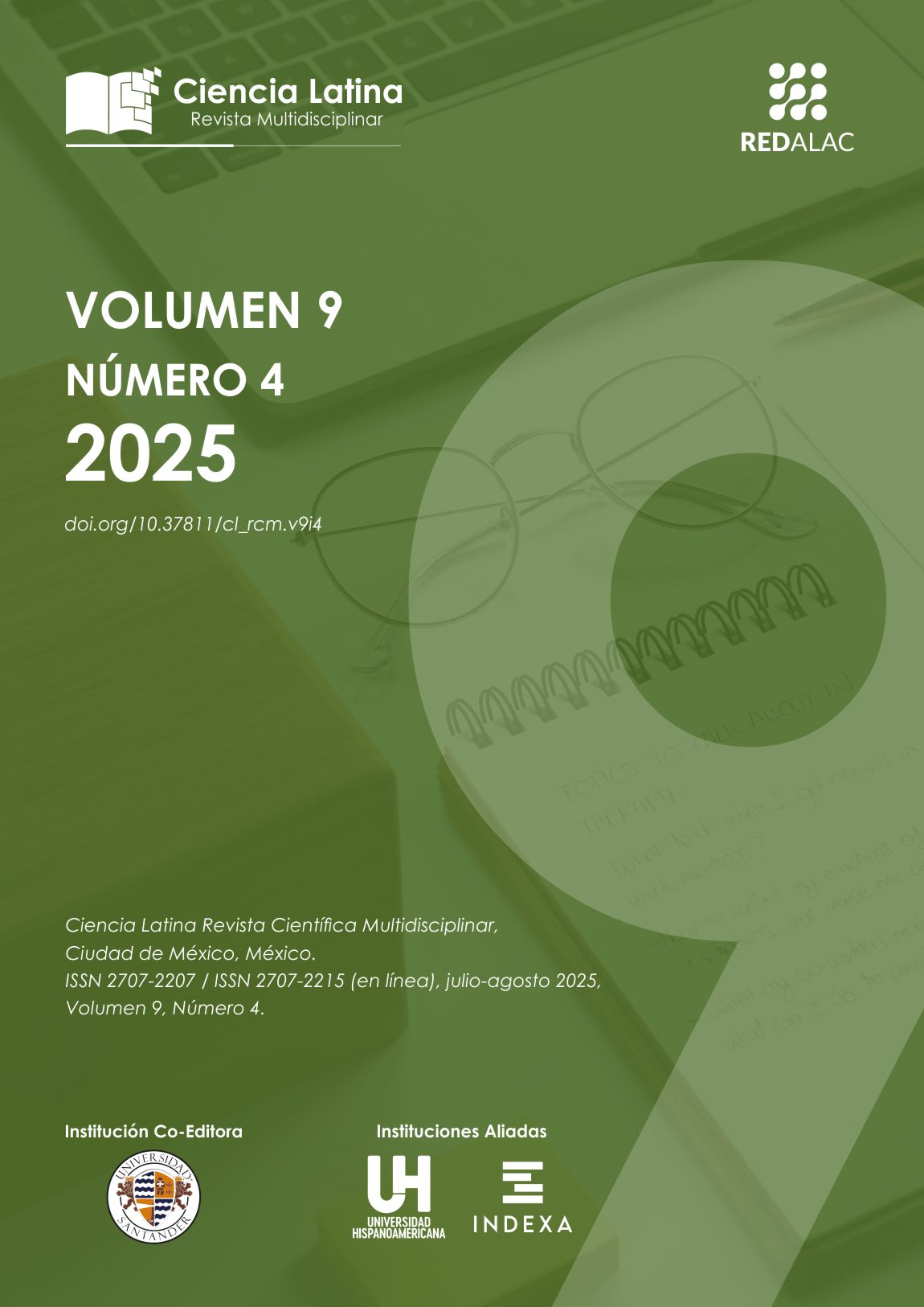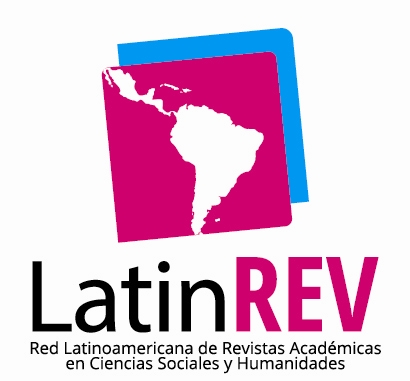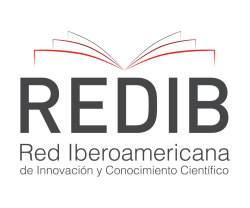Zonas Azules y longevidad centenaria en México y el mundo: Una revisión sistemática
Resumen
Este artículo presenta una revisión sistemática de investigaciones publicadas entre 2015 y 2025 sobre los factores asociados a la longevidad centenaria en humanos, con énfasis en las denominadas Zonas Azules (Okinawa, Cerdeña, Nicoya, Ikaria y Loma Linda) y estudios relevantes de México. A través de una búsqueda sistemática en PubMed, Scopus y Web of Science, se identificaron 402 artículos, de los cuales 27 cumplieron con los criterios de inclusión definidos por la metodología PRISMA. Los estudios seleccionados se organizaron en cuatro categorías temáticas; estilo de vida y actividad física, dieta y nutrición, redes sociales y espiritualidad, e influencia genética y epigenética. Los hallazgos destacan la importancia de una vida físicamente activa integrada a la rutina diaria, una dieta basada en plantas con restricción calórica moderada, redes familiares y comunitarias sólidas, y prácticas espirituales regulares como elementos comunes en las poblaciones longevas. Asimismo, si bien los factores genéticos (como los genes APOE ε2 y FOXO3A) ofrecen una base biológica, su expresión está condicionada por factores epigenéticos modulables por el entorno y el estilo de vida. Se concluye que la longevidad saludable es un fenómeno multifactorial y contextual, cuyas implicaciones pueden orientar políticas públicas para un envejecimiento activo y digno en México y en el mundo.
Descargas
Citas
Brooks-Wilson, A. R. (2013). Genetics of healthy aging and longevity. Human Genetics, 132(12), 1323–1338. https://doi.org/10.1007/s00439-013-1342-z
Buettner, D. & Skemp, S. (2016). Blue Zones. American Journal of Lifestyle Medicine, 10(5), 318–321. Buettner, D. (2010). The Blue Zones: Lessons for Living Longer from the People Who've Lived the Longest. National Geographic Books.
Buettner, D. (2012). The Blue Zones: 9 Lessons for Living Longer from the People Who've Lived the Longest (2nd ed.). National Geographic. Buettner, D. (2016). The Blue Zones Solution: Eating and Living Like the World's Healthiest People. National Geographic.
Buettner, D., Skemp, S., & Levey, J. (2016). Blue Zones: Lessons from the world’s longest lived. American Journal of Lifestyle Medicine, 10(5), 318–321. https://doi.org/10.1177/1559827616637066
Chung, S., Kim, J. K., Kim, Y. H., Park, S., & Yu, B. P. (2022). Nutritional modulation of epigenetic aging via dietary bioactive compounds. Nutrients, 14(5), 1012. https://doi.org/10.3390/nu14051012
Ciaglia, E., Vecchione, A., & Paolisso, G. (2022). Genetic and epigenetic factors in human longevity: A review. Frontiers in Genetics, 13, 830123.
Flachsbart, F., Caliebe, A., Kleindorp, R., Blanche, H., von Eller-Eberstein, H., Nikolaus, S., ... & Schreiber, S. (2009). Association of FOXO3A variation with human longevity confirmed in German centenarians. Proceedings of the National Academy of Sciences, 106(8), 2700–2705. https://doi.org/10.1073/pnas.0809594106
Fraga, M. F., & Esteller, M. (2007). Epigenetics and aging: The targets and the marks. Trends in Genetics, 23(8), 413–418. https://doi.org/10.1016/j.tig.2007.05.008
Franco, M. C., Colón-Ramos, U., DiPietro, L., & Haskell, W. (2022). Healthy aging: From cell to society. Annual Review of Public Health, 43, 363–385. https://doi.org/10.1146/annurev-publhealth-052920-113942
Fraser, G. E. (2003). Diet, life expectancy, and chronic disease: Studies of Seventh-Day Adventists and other vegetarians. The American Journal of Clinical Nutrition, 78(3 Suppl), 539S–543S. https://doi.org/10.1093/ajcn/78.3.539S
Garatachea, N., Emanuele, E., & Lucia, A. (2015). The telomere–telomerase system and longevity in humans: A mini-review. Gerontology, 61(6), 534–539. https://doi.org/10.1159/000369033
García, R. A., & Sáenz, J. L. (2021). Ikigai and life satisfaction in older adults: Evidence from Japan. Journal of Aging and Health, 33(1–2), 43–58. https://doi.org/10.1177/0898264320935946
Gómez-Salas, G., Brenes-Camacho, G., & Rosero-Bixby, L. (2024). Diet and nutritional status in centenarians and their offspring in the Nicoya Peninsula, Costa Rica. Geroscience. https://doi.org/10.1007/s11357-024-01261-6
Gómez-Salas, G., Vargas-Chaves, M., Chaves-Valverde, D., & Rosero-Bixby, L. (2024). Dieta tradicional y longevidad en la zona azul de Nicoya, Costa Rica: un estudio de centenarios y sus descendientes. Revista Centroamericana de Salud Pública, 10(1), 23–35.
González-Cantú, A., García-de la Torre, R., & Martínez-Medina, C. (2024). Atención geriátrica y mortalidad en adultos mayores longevos en Monterrey, México: un estudio observacional. Revista Mexicana de Geriatría y Gerontología, 40(2), 45–58.
Govindaraju, D. R., Anand, S., & Di Rienzo, A. (2015). Genetics, lifestyle and longevity: Insights from centenarian studies. Nature Reviews Genetics, 16(9), 513–525.
Govindaraju, D. R., Atzmon, G., & Barzilai, N. (2015). Genetics, lifestyle and longevity: Lessons from centenarians. Applied & Translational Genomics, 4, 23–32. https://doi.org/10.1016/j.atg.2015.01.001
Herbert, C., House, M., Dietzman, R., Climstein, M., Furness, J., & Kemp‑Smith, K. (2022). Blue Zones: Centenarian Modes of Physical Activity: A Scoping Review. Journal of Population Ageing, 15(4), 345–364. https://doi.org/10.1007/s12062-022-09396-0
Holt-Lunstad, J., Smith, T. B., & Layton, J. B. (2010). Social relationships and mortality risk: a meta-analytic review. PLoS Medicine, 7(7), e1000316. https://doi.org/10.1371/journal.pmed.1000316
Holt-Lunstad, J., Smith, T. B., Baker, M., Harris, T., & Stephenson, D. (2015). Loneliness and social isolation as risk factors for mortality: A meta-analytic review. Perspectives on Psychological Science, 10(2), 227–237. https://doi.org/10.1177/1745691614568352
Horvath, S. (2013). DNA methylation age of human tissues and cell types. Genome Biology, 14(10), R115. https://doi.org/10.1186/gb-2013-14-10-r115
Horvath, S., & Raj, K. (2018). DNA methylation-based biomarkers and the epigenetic clock theory of ageing. Nature Reviews Genetics, 19(6), 371–384. https://doi.org/10.1038/s41576-018-0004-3
INEGI. (2020). Censo de Población y Vivienda 2020: Resultados definitivos. Instituto Nacional de Estadística y Geografía. https://www.inegi.org.mx/programas/ccpv/2020/
Kwon, D., Moore, M. A., Wang, Y., & Fraser, G. (2024). Power9 lifestyle and oral health in a Blue Zone community: Evidence from Loma Linda, California. Journal of Aging and Health. Advance online publication. https://doi.org/10.1177/0898264324123346
Kwon, H., Smith, J., Lee, Y., & Johnson, D. (2024). Power 9 lifestyle adherence and oral health among Adventist seniors in Loma Linda. Journal of Population Ageing, 17(2), 123–136.
Longo, V. D., & Panda, S. (2016). Fasting, circadian rhythms, and time-restricted feeding in healthy lifespan. Cell Metabolism, 23(6), 1048–1059. https://doi.org/10.1016/j.cmet.2016.06.001
López-Otín, C., Blasco, M. A., Partridge, L., Serrano, M., & Kroemer, G. (2013). The hallmarks of aging. Cell, 153(6), 1194–1217. https://doi.org/10.1016/j.cell.2013.05.039
Lu, A. T., Quach, A., Wilson, J. G., Reiner, A. P., Aviv, A., Hou, L., ... & Horvath, S. (2020). DNA methylation GrimAge strongly predicts lifespan and healthspan. Aging, 11(2), 303–327. https://doi.org/10.18632/aging.101684
Marston, H. R., & van Hoof, J. (2021). Who doesn’t want to live forever? Embracing older adults’ experiences of aging and longevity in Blue Zones. Journal of Aging Studies, 56, 100915. https://doi.org/10.1016/j.jaging.2021.100915
Page, M. J., McKenzie, J. E., Bossuyt, P. M., Boutron, I., Hoffmann, T. C., Mulrow, C. D., ... & Moher, D. (2021). The PRISMA 2020 statement: An updated guideline for reporting systematic reviews. BMJ, 372, n71. https://doi.org/10.1136/bmj.n71
Pes, G. M., Tolu, F., Poulain, M., & Errigo, A. (2022). Longevity and nutrition: A multidisciplinary approach. Maturitas, 161, 58–64. https://doi.org/10.1016/j.maturitas.2022.02.005
Pes, G. M., Tolu, F., Poulain, M., Errigo, A., & Dore, M. P. (2022). Blue Zones: A narrative review of longevity studies and lessons learned. Maturitas, 161, 76–83. https://doi.org/10.1016/j.maturitas.2022.03.008
Pes, G., Franceschi, C., & Buettner, D. (2022). Diet and longevity in Blue Zones: A narrative review. Maturitas, 156, 1–10.
Poulain, M., Pes, G., & Grasland, C. (2013). Centenarian models and the blue zones: Lessons from Sardinia and Okinawa. In J. W. Vaupel & K. Kinsella (Eds.), Demography of longevity (pp. 87–103). Springer.
Rivera-Hernández, M., Gallegos-Carrillo, K., Reyes-Morales, H., & Amaya-Castellanos, C. (2019). Aging and health among older adults in indigenous communities in Mexico: The importance of social participation. Aging and Health Research, 1(1), 100002. https://doi.org/10.1016/j.ahr.2021.100002
Rosas-Carrasco, O., López-Teros, M. T., & Gutiérrez-Robledo, L. M. (2017). Características de adultos mayores centenarios en la Ciudad de México: un estudio transversal. Salud Pública de México, 59(3), 270–276.
Rosero-Bixby, L. (2023). Longevidad y cambios generacionales en la zona azul de Nicoya, Costa Rica: ¿Se mantiene la ventaja demográfica? Población y Salud en Mesoamérica, 20(1), 1–18.
Rosero-Bixby, L. (2023). The erosion of the longevity advantage in the Nicoya Peninsula, Costa Rica. Journal of Gerontology: Social Sciences, 78(5), 831–841. https://doi.org/10.1093/geronb/gbad023
Ruiu, M. L., Fadda, M., & Piras, F. (2021). Optimism, life satisfaction and religiosity among rural vs. urban elders in Sardinian Blue Zone. Journal of Aging Studies, 58, 100936.
Sarnowski, C., Sugrue, L. P., Weng, L. C., Wojcik, G. L., Khera, A. V., & Timshel, P. (2023). Polygenic architecture of human longevity and related traits. Nature Aging, 3(1), 41–51. https://doi.org/10.1038/s43587-022-00302-7
Sebastiani, P., & Perls, T. T. (2012). The genetics of extreme longevity: Lessons from the New England Centenarian Study. Frontiers in Genetics, 3, 277. https://doi.org/10.3389/fgene.2012.00277
Sebastiani, P., Gurinovich, A., Nygaard, M., Sasaki, T., Sweigart, B., Bae, H., ... & Perls, T. T. (2019). APOE alleles and extreme human longevity. Journal of Gerontology: Biological Sciences, 74(1), 44–51. https://doi.org/10.1093/gerona/gly169
Shadyab, A. H., & LaCroix, A. Z. (2015). Genetic factors associated with longevity: A review of recent findings. Ageing Research Reviews, 19, 1–7. https://doi.org/10.1016/j.arr.2014.10.005
Shea, B. J., Reeves, B. C., Wells, G., Thuku, M., Hamel, C., Moran, J., ... & Henry, D. A. (2017). AMSTAR 2: A critical appraisal tool for systematic reviews that include randomized or non-randomized studies of healthcare interventions, or both. BMJ, 358, j4008. https://doi.org/10.1136/bmj.j4008
Sherwani, S., Ahmad, T., & Malik, U. (2024). Diet, lifestyle and medication use in centenarians and near‑centenarians: A systematic review of 34 studies. Geroscience. Advance online publication. https://doi.org/10.1007/s11357-024-01247-4
Sone, T., Nakaya, N., Ohmori, K., Shimazu, T., Higashiguchi, M., Kakizaki, M., ... & Tsuji, I. (2008). Sense of life worth living (ikigai) and mortality in Japan: Ohsaki study. Psychosomatic Medicine, 70(6), 709–715. https://doi.org/10.1097/PSY.0b013e31817e7e64
Tong, A., Sainsbury, P., & Craig, J. (2007). Consolidated criteria for reporting qualitative research (COREQ): A 32-item checklist for interviews and focus groups. International Journal for Quality in Health Care, 19(6), 349–357. https://doi.org/10.1093/intqhc/mzm042
Valdés-Corchado, A., Sánchez-García, S., Juárez-Cedillo, T., García-Peña, C., & Gutiérrez-Robledo, L. M. (2017). Successful aging among Mexican centenarians: A qualitative study. Geriatrics & Gerontology International, 17(11), 1811–1818. https://doi.org/10.1111/ggi.13008
Valdés‑Corchado, P., Rosas‑Carrasco, O., Brito‑Robles, M., Martínez‑Gómez, M., & Fernández‑Salazar, G. (2017). Sociodemographic and clinical characteristics of centenarians in Mexico City. BioMed Research International, 2017, 7195801.
Villa, F., Carrizzo, A., Spinelli, C. C., Ferrario, A., Malovini, A., Maciag, A., ... & Vecchione, C. (2015). Genetic analysis reveals a longevity-associated protein modulating endothelial function and angiogenesis. Circulation Research, 117(4), 333–345. https://doi.org/10.1161/CIRCRESAHA.117.306513
Von Elm, E., Altman, D. G., Egger, M., Pocock, S. J., Gøtzsche, P. C., Vandenbroucke, J. P., & STROBE Initiative. (2007). The Strengthening the Reporting of Observational Studies in Epidemiology (STROBE) statement: Guidelines for reporting observational studies. Lancet, 370(9596), 1453–1457.
Willcox, B. J., Donlon, T. A., He, Q., Chen, R., Grove, J. S., Yano, K., ... & Willcox, D. C. (2008). FOXO3A genotype is strongly associated with human longevity. Proceedings of the National Academy of Sciences, 105(37), 13987–13992.
Willcox, D. C., Willcox, B. J., & Ferrucci, L. (2008). Secrets of healthy aging and longevity from exceptional survivors around the globe: Lessons from octogenarians to supercentenarians. The Journals of Gerontology: Series A, 63(11), 1181–1185.
Willcox, D. C., Willcox, B. J., & Suzuki, M. (2007). The Okinawa Program: How the world’s longest-lived people achieve everlasting health — and how you can too. The American Journal of Geriatric Cardiology, 16(1), 30–36.
Willcox, D. C., Willcox, B. J., He, Q., Curb, J. D., & Suzuki, M. (2006). Siblings of Okinawan centenarians share lifelong mortality advantages. Journal of Gerontology: Biological Sciences, 61(11), 345–352. https://doi.org/10.1093/gerona/61.11.345
Añapa Quiñónez, P. L., Recalde Páez, J. P., Fey Zalamea, C. D., Rivera Quiñónez, E. D., & Acuri Pacheco, D. A. (2025). Estrategias para la Implementación Efectiva del Aprendizaje Híbrido (Blended Learning) en Instituciones Educativas Rurales del Ecuador: Un Análisis Integral. Ciencia Y Reflexión, 4(2), 1160–1184. https://doi.org/10.70747/cr.v4i2.325
Agila Mocha, R. J., Vivanco Ureña, C. I., León Bravo, F. E., & Reyes Carrión , J. P. (2025). Software Educativos para el Proceso de Enseñanza Aprendizaje de Matemáticas en Bachillerato. Ciencia Y Reflexión, 4(2), 1341–1369. https://doi.org/10.70747/cr.v4i2.334
Chen Shih , J. (2025). Relación entre inteligencia emocional y rendimiento académico en estudiantes de nivel superior de Arequipa en la postpandemia . Ciencia Y Reflexión, 4(2), 648–667. https://doi.org/10.70747/cr.v4i2.299
Derechos de autor 2025 Alexa Adanae Quiroz Melendez , Arturo López Bravo, Donovan Casas Patiño, Juliette Gamboa Castro, Leslie Suzet Parra Rivera

Esta obra está bajo licencia internacional Creative Commons Reconocimiento 4.0.













.png)




















.png)
1.png)


